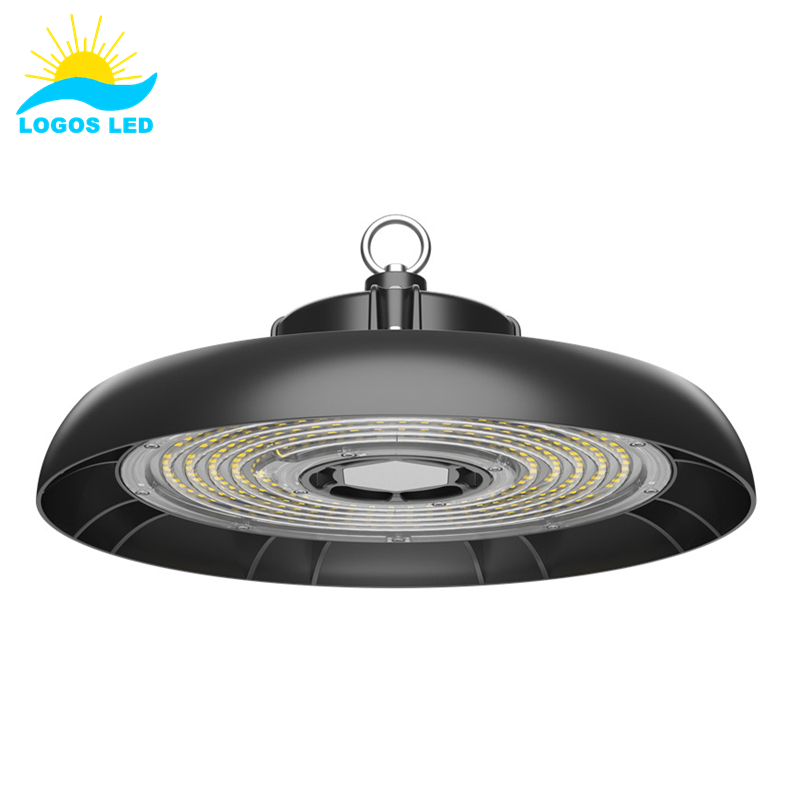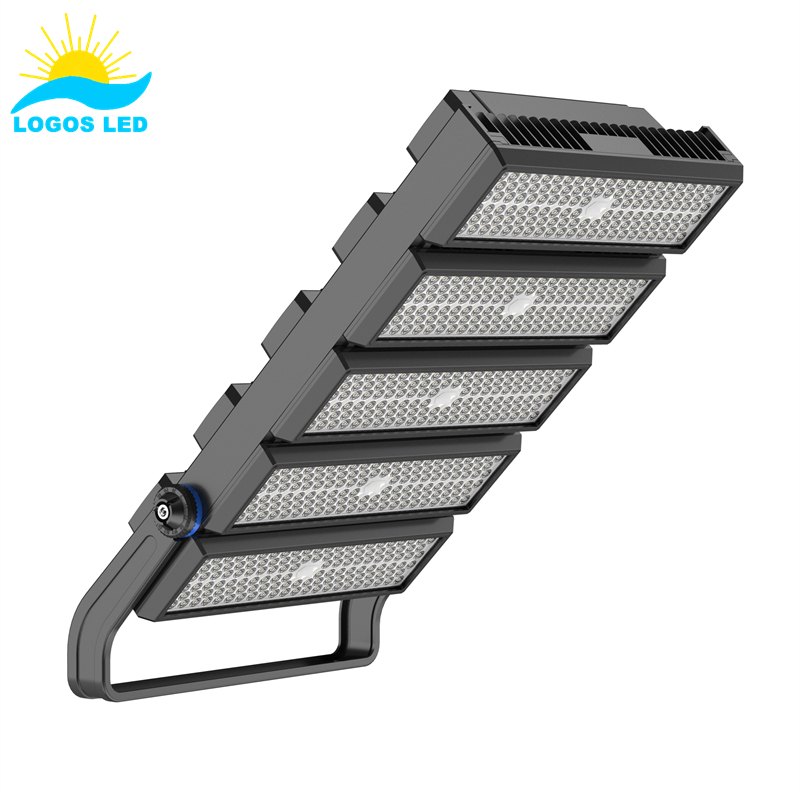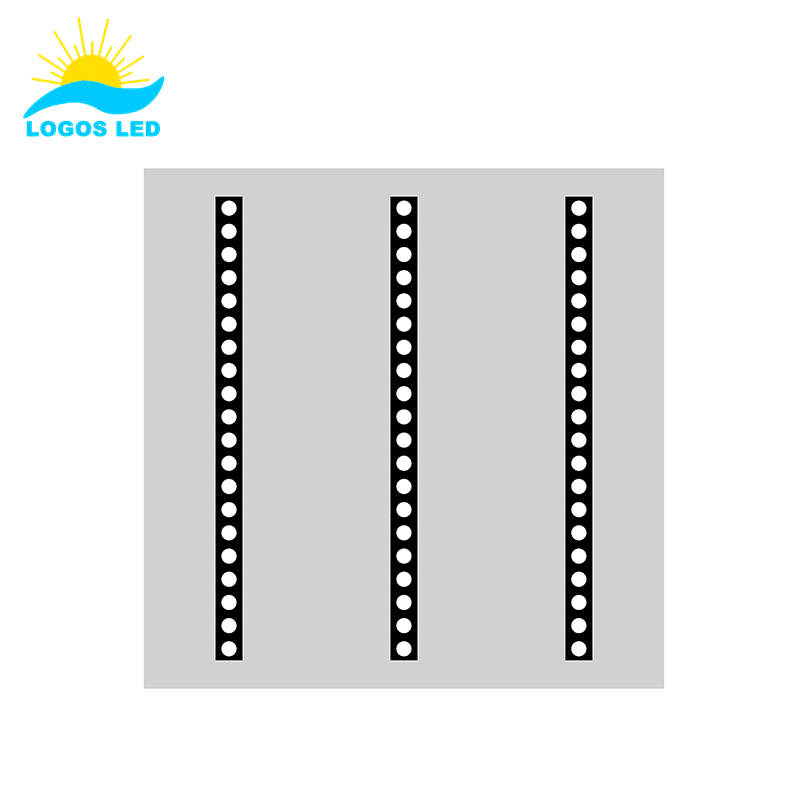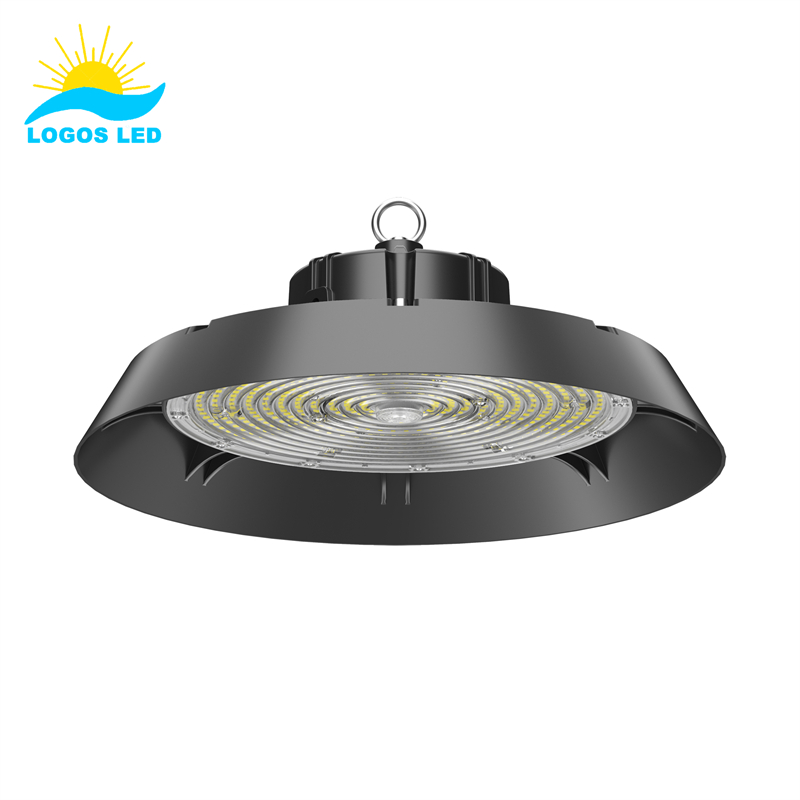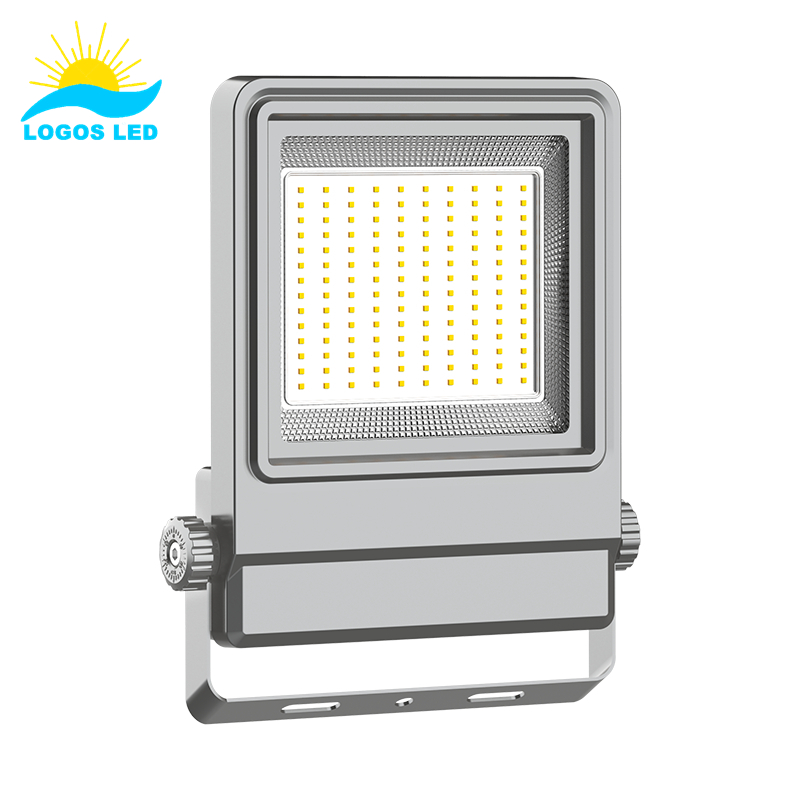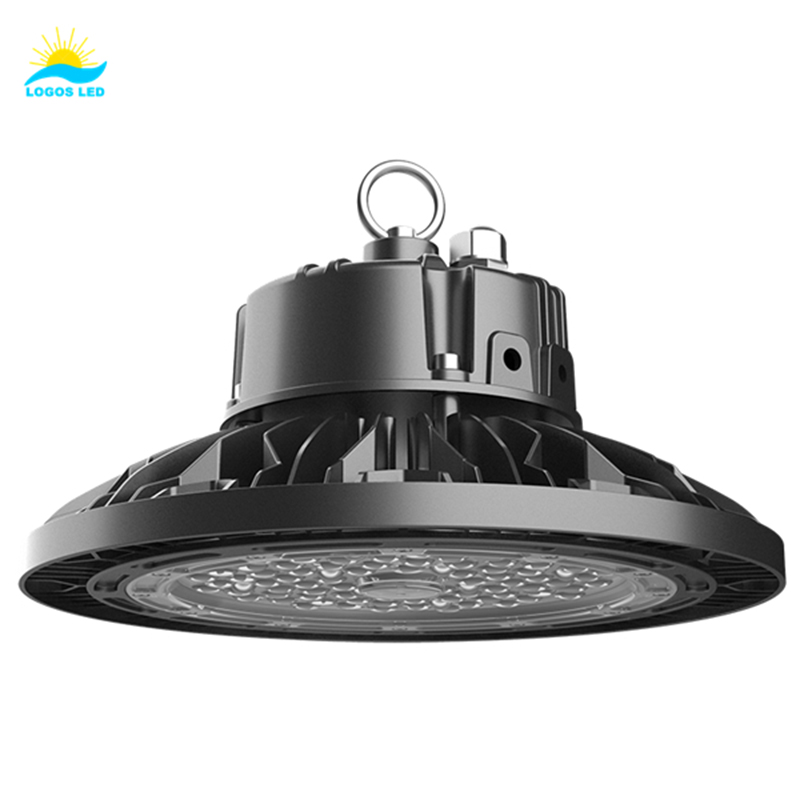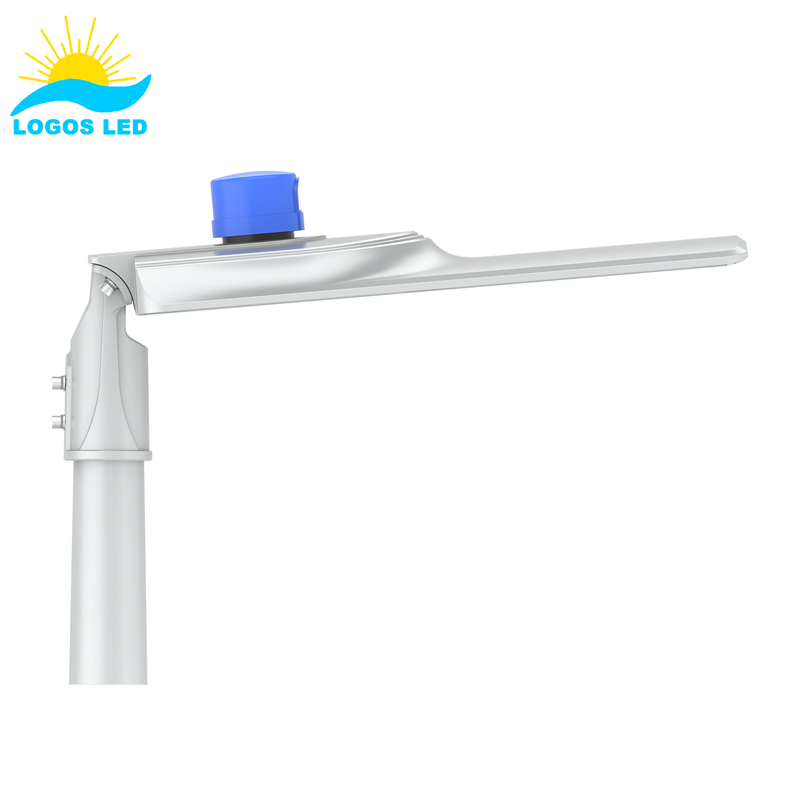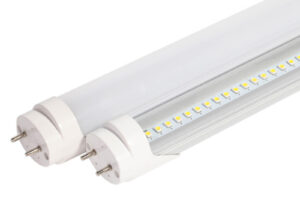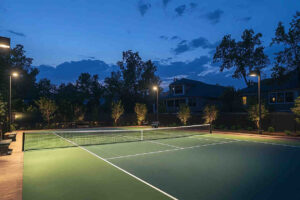Pain points in your golf course lighting don’t just affect gameplay—they can also drain your budget with high maintenance costs. But with the right lighting solutions, you can tackle these issues head-on. In this guide, we’ll explore how to optimize your golf course lighting, creating a fantastic playing experience while keeping your costs in check.
Golf courses require tailored lighting solutions for safety, playability, and aesthetics during nighttime events. Fairways and tee boxes demand medium-level, even lighting to eliminate shadows for clear visibility. Greens require higher illumination with minimal glare to highlight terrain nuances for accurate putting. Driving ranges need high illumination with focused beams for long-distance visibility. Parking lots and pathways should have soft, energy-efficient lighting, while clubhouses and outdoor seating benefit from warm, moderate brightness with adjustable settings. Maintenance areas need bright, durable lighting for safe, early morning or late-night work. LED technology is preferred for its efficiency, longevity, and customization options.
Stay with us as we highlight the most crucial aspects of golf course lighting and how you can make it work to your advantage.
Table of Contents
What Are the Specific Lighting Requirements for Different Areas of a Golf Course?
Your golf course has diverse lighting needs depending on the specific areas and activities. Proper lighting ensures safety, enhances playability, and creates an inviting atmosphere for nighttime events. Here’s a breakdown of the requirements for different areas:
Fairways and Tee Boxes
Golfers need consistent lighting on fairways and tee boxes to see the ball clearly and aim their shots without distractions.
- Lighting Requirements: Medium illumination levels (50–100 lux) with uniform light distribution.
- Recommended Fixtures: LED floodlights or high mast lights with wide beam angles to cover extensive areas evenly.
Greens and Holes
Greens require precision lighting to highlight terrain features like slopes and undulations, allowing players to accurately plan their putts.
- Lighting Requirements: High illumination (200–300 lux) with minimal glare.
- Recommended Fixtures: LED floodlights with focused beams to illuminate greens without spilling light into nearby areas.
Driving Ranges
Driving ranges need powerful, targeted lighting for visibility over long distances and to clearly light the hitting zones and range markers.
- Lighting Requirements: High illumination levels (300–500 lux) with concentrated beams.
- Recommended Fixtures: LED high mast lights or LED sports lights with narrow beam angles for long-range coverage.
Parking Lots and Pathways
Soft lighting ensures safety in parking lots and along pathways without causing glare or discomfort.
- Lighting Requirements: Low to medium illumination (20–50 lux) with energy-efficient options.
- Recommended Fixtures: LED streetlights or bulkhead lights with motion sensors to enhance efficiency.
Clubhouses and Outdoor Seating Areas
These spaces benefit from aesthetically pleasing lighting that creates a welcoming ambiance for social activities.
- Lighting Requirements: Warm white light with moderate brightness.
- Recommended Fixtures: LED panel lights, downlights, or decorative fixtures with dimming features for adaptability.
Maintenance Areas
Maintenance areas require bright, reliable lighting to facilitate early morning or late-night tasks safely.
- Lighting Requirements: Bright white light (100–200 lux).
- Recommended Fixtures: LED vapor-proof lights or floodlights for durability and consistent performance.
LED lighting is the ideal choice for golf courses due to its long lifespan, low energy consumption, and customizable options. High-quality LEDs provide consistent illumination, reduce maintenance costs, and can be tailored to fit the specific needs of your course.
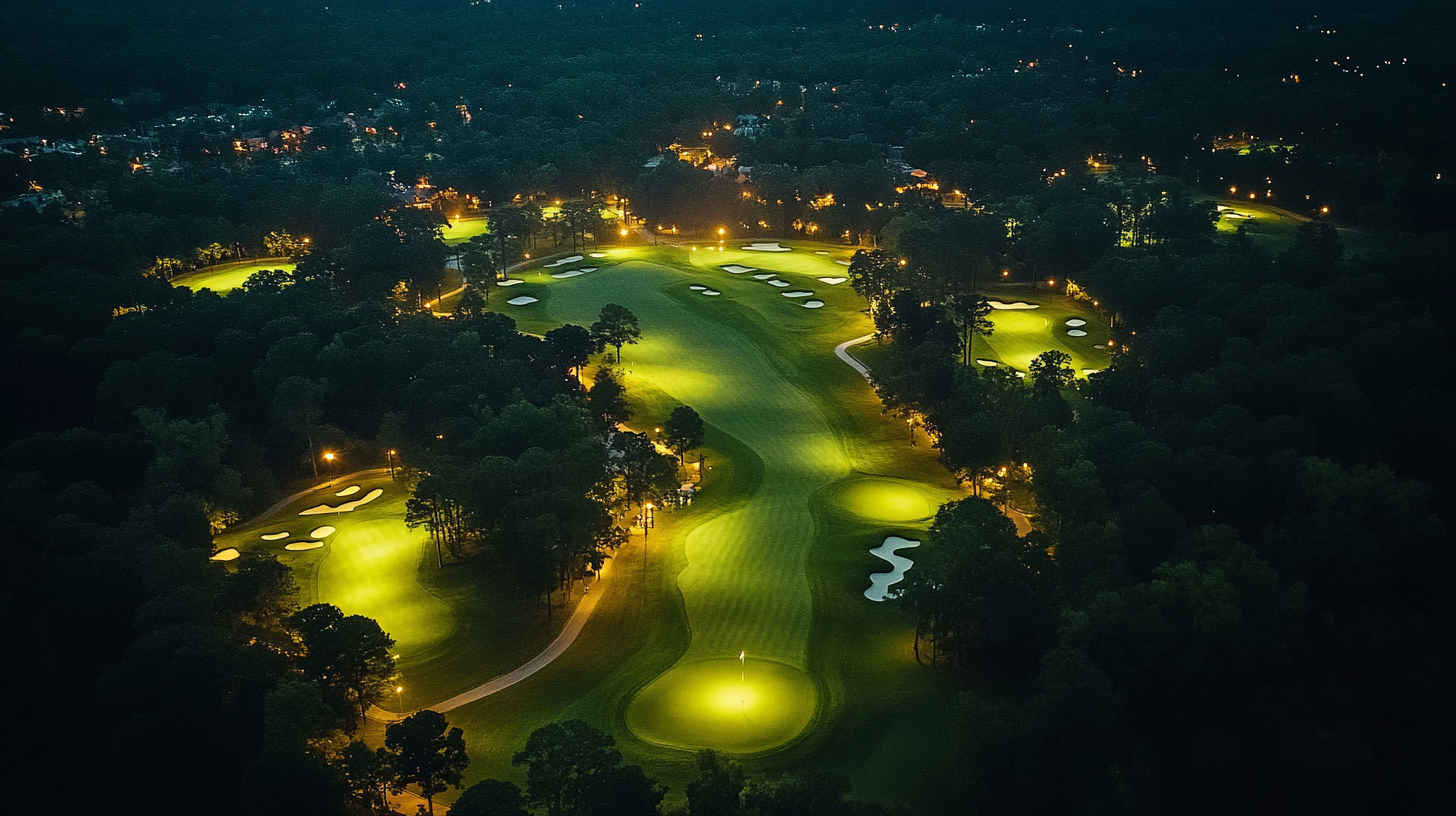
Lighting Design: Competition Venues vs. Recreational Courses
Lighting requirements vary significantly between professional competition venues and recreational golf courses. Here’s how they differ:
1. Illumination Standards
- Competition Venues: Require high illumination levels (700–1,000 lux on greens and tees; 500–700 lux on fairways) to meet broadcasting needs and ensure clear visibility for players and spectators.
- Recreational Courses: Use moderate illumination (50–300 lux) for casual play and local events.
2. Uniformity of Light
- Competition Venues: High uniformity (Uniformity Ratio ≥ 0.7) eliminates shadows and ensures balanced brightness, essential for performance and video quality.
- Recreational Courses: Moderate uniformity suffices, focusing on functional lighting over perfection.
3. Glare and Light Spillage
- Competition Venues: Minimized glare with advanced optics and shielded LED fixtures to prevent distractions.
- Recreational Courses: Less stringent glare control since lighting caters to local players rather than large audiences.
4. Fixture Placement and Design
- Competition Venues: Precision placement with advanced fixture designs, including tilt and beam-shaping capabilities, to provide seamless coverage.
- Recreational Courses: Simpler setups prioritize functionality and cost-effectiveness.
5. Broadcasting and Spectator Needs
- Competition Venues: Require specialized lighting for high-definition broadcasting, including flicker-free operation and enhanced color rendering (CRI ≥ 80). Additional lighting supports spectator areas.
- Recreational Courses: Focus solely on gameplay lighting, with no need for broadcasting-quality systems or accommodations for spectators.
6. Cost and Energy Efficiency
- Competition Venues: High initial investment with sophisticated systems and real-time control features, leading to higher operational costs.
- Recreational Courses: Emphasis on cost-effective, energy-efficient solutions with minimal automation or advanced customization.
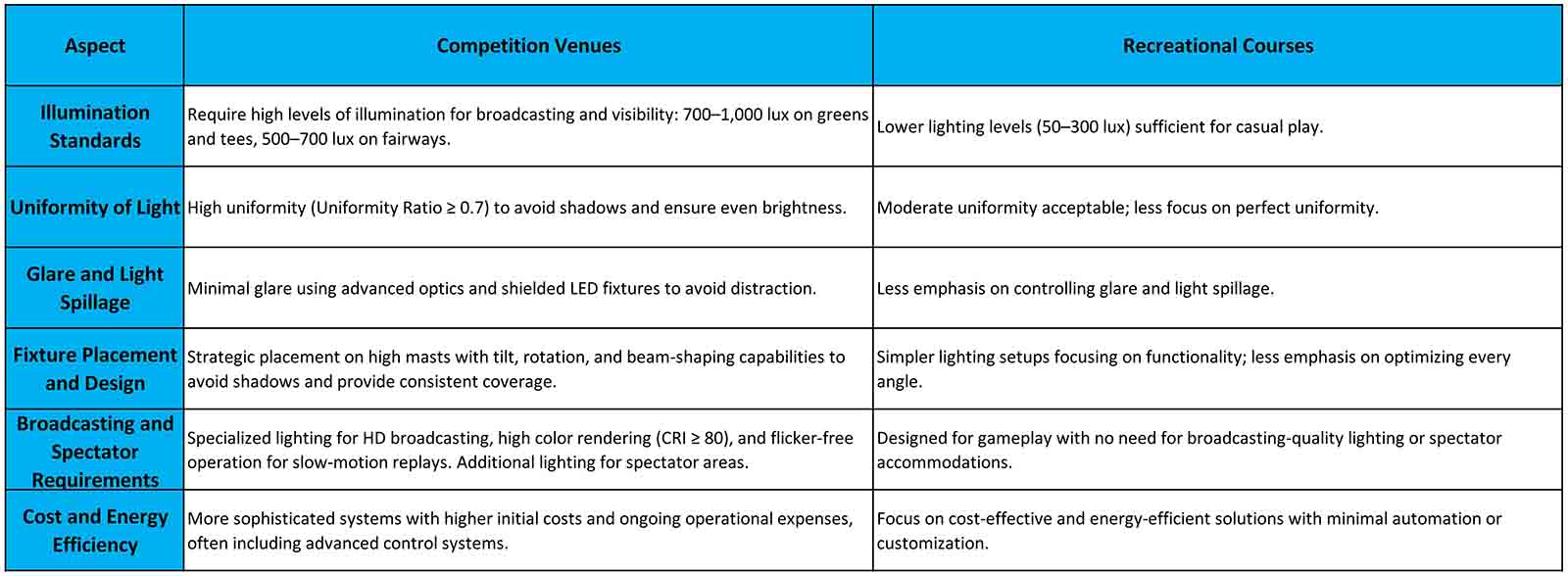
Lighting Design Differ for Competition Venues vs Recreational Golf Courses
Customizing your golf course lighting allows you to tailor it to your specific needs, whether you’re running a high-stakes competition venue or a casual recreational course. By choosing the right lighting setup, you can achieve the perfect balance of functionality, aesthetics, and efficiency.
What Are the Benefits of Optimized Golf Course Lighting for Golfers?
Optimized lighting on your golf course delivers a host of benefits for golfers, transforming the experience into something safe, enjoyable, and memorable. Here’s how great lighting makes all the difference:
1. Improved Visibility and Gameplay
- Clear Ball Tracking: High-quality lighting ensures golfers can follow their ball’s trajectory, even on long drives, improving precision and satisfaction.
- Enhanced Course Features: Well-placed lighting highlights the course’s contours, hazards, and slopes, helping players assess their shots with confidence.
- Reduced Shadows: Uniform light distribution eliminates distracting shadows, particularly on greens and bunkers, for a smoother playing experience.
2. Extended Play Hours
- Nighttime Accessibility: Great lighting keeps your course playable after sunset, accommodating golfers with busy daytime schedules.
- More Practice Opportunities: Driving ranges and putting greens become evening-friendly, letting players refine their skills whenever it suits them.
3. Enhanced Safety and Comfort
- Safer Navigation: Well-lit pathways, parking lots, and course areas reduce risks and create a safer environment for everyone.
- Glare-Free Design: Advanced LED systems prevent glare, keeping players focused and comfortable during their games.
4. Elevated Playing Experience
- Aesthetic Appeal: Thoughtful lighting adds a touch of elegance and beauty to your course, especially during evening play.
- Reduced Fatigue: Balanced, high-quality lighting minimizes eye strain, allowing golfers to play longer and enjoy more.
5. Support for Competitive Play
- Professional Standards: Optimized lighting meets the requirements for tournaments, ensuring fair and accurate gameplay for all skill levels.
- Better Spectator Experience: For competitive settings, great lighting improves visibility for spectators and enhances broadcasting quality.
6. Encouragement of Social Interaction
- Nighttime Events: With proper lighting, your course can host evening leagues, events, or casual games, fostering connections among players.
- Welcoming Atmosphere: A well-lit clubhouse and outdoor areas encourage golfers to stay longer, relax, and socialize after their rounds.
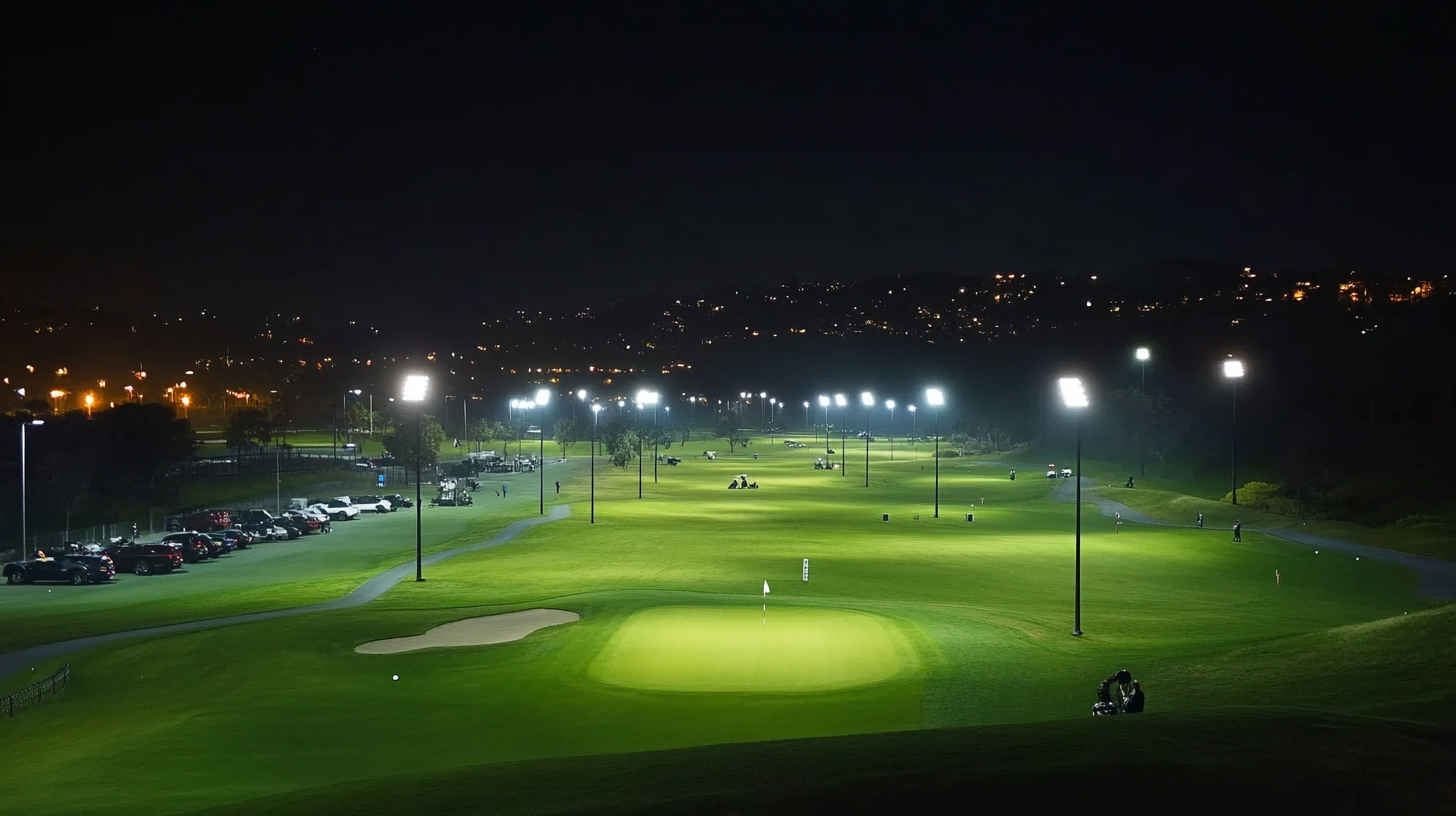
How to Ensure Uniformity in Golf Course Lighting
Uniform lighting is essential for a golf course to eliminate dark spots and bright areas that disrupt gameplay. Achieving consistency involves careful planning, advanced fixtures, and ongoing maintenance. Here’s how you can do it:
1. Comprehensive Lighting Plan
- Site Analysis: Study the layout, terrain, vegetation, and playing zones such as greens, fairways, and tee boxes.
- Lighting Simulation: Use specialized software to design and simulate light distribution, identifying and correcting potential inconsistencies.
- Customized Placement: Tailor fixture placement and height to the area’s specific needs, ensuring balanced illumination.
2. High-Quality Fixtures and Beam Angles
- LED Technology: Use LEDs for superior control over light direction and intensity.
- Adjustable Beams: Choose fixtures with customizable beam angles—wide beams for fairways and narrow beams for focused areas like greens.
3. Optimal Mounting and Angling
- High Mast Placement: Mount fixtures on tall poles to cover larger areas while reducing shadows.
- Precise Angling: Overlap beams slightly to create seamless transitions without over-brightening.
4. Adherence to Standards
- Uniformity Ratios: Follow guidelines like a Uniformity Ratio of ≥0.6 for recreational courses and ≥0.7 for competition venues.
- Lux Level Testing: Use light meters to measure illumination and fine-tune fixtures.
5. Minimizing Glare and Spill
- Anti-Glare Features: Install shields or hoods to reduce glare and focus light where needed.
- Directional Lighting: Ensure beams are angled downward to prevent spillage into non-play areas.
6. Regular Maintenance
- Cleaning and Repairs: Keep fixtures clean and replace components as needed to maintain consistent performance.
- Upgrades: Use smart systems to dynamically adjust lighting for changing conditions.
By integrating these elements, you can ensure your golf course lighting is uniform, enhancing both player performance and visual appeal.
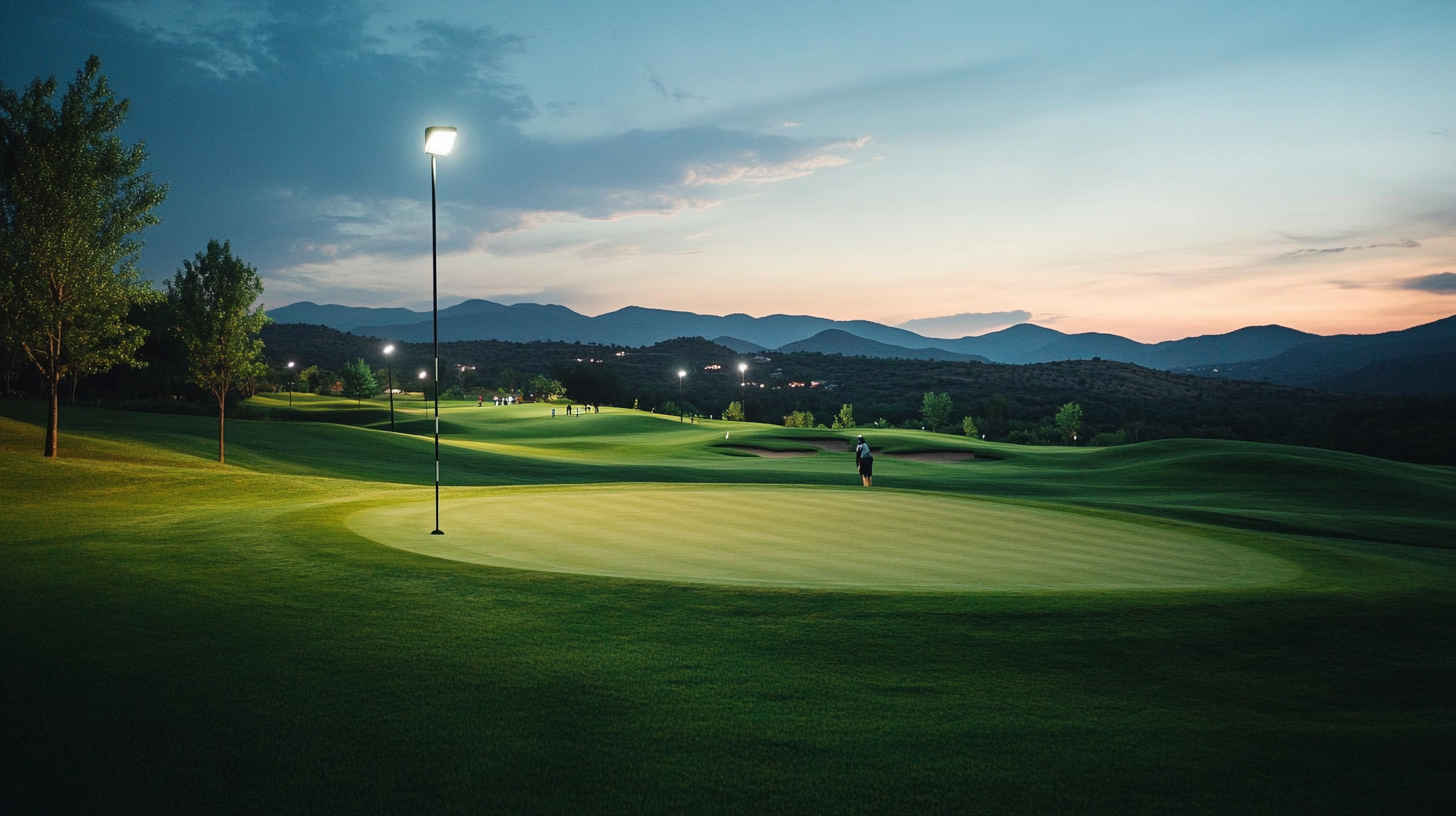
The Role of Color Temperature in Golf Course Lighting
Color temperature significantly affects visibility, ambiance, and overall experience on the course. Measured in Kelvin (K), it can range from warm (yellow tones) to cool (blue tones). Here’s how to optimize it:
1. Enhancing Visibility
- Neutral to Cool Light: Use 4000K–5700K for clear visibility of slopes, hazards, and balls.
- Color Rendering: High CRI lights ensure natural and vibrant appearances of course elements.
2. Creating a Natural Feel
- Daylight Simulation: 5000K–5700K replicates natural daylight for realistic visibility during nighttime play.
- Reduced Eye Strain: Proper lighting minimizes fatigue, allowing players to enjoy the game longer.
3. Differentiating Functional Areas
- Fairways and Greens: Opt for cool white light (4500K–5700K) for clarity.
- Pathways and Parking Lots: Warm tones (3000K–4000K) create a safe and welcoming atmosphere.
- Clubhouses: Use warmer tones (2700K–3000K) to encourage relaxation.
4. Meeting Professional Standards
- Broadcasting Needs: For tournaments, 5000K–5700K ensures clarity for players, spectators, and broadcasts.
- Uniform Appearance: Consistent color temperatures maintain professionalism.
5. Enhancing Aesthetics
- Contrast: Cooler tones highlight greens, water, and sand for striking visuals.
- Scenic Beauty: Use varying temperatures for dramatic effects during events.
Advanced LEDs with adjustable color temperatures let you customize the lighting to fit every need. Read more about LED Light Color Temperature: Which is Best for Sports Field Lighting?
Minimizing Glare in Golf Course Lighting
Excess glare disrupts visibility and comfort for golfers. Here’s how to reduce it effectively:
1. Anti-Glare Optics
- Lenses and Diffusers: Use fixtures with anti-glare lenses or diffusers to soften light.
- Shields: Install shields to block light escaping at unwanted angles.
2. Strategic Placement and Angling
- High Mast Installation: Place lights high to distribute beams evenly.
- Proper Angling: Aim beams downward and avoid direct sightlines to minimize glare.
3. Precision Beam Control
- Narrow Beam Angles: Use narrow beams for focused lighting.
- Balanced Coverage: Combine wide and narrow beams strategically for uniform illumination.
4. Uniform Lighting Design
- Seamless Transitions: Eliminate sudden brightness variations by overlapping beams.
- Consistent Light Levels: Maintain uniformity to prevent discomfort.
5. Advanced Controls
- Smart Adjustments: Use dimmers and smart systems to adjust brightness dynamically.
- Real-Time Optimization: Adapt lighting based on current conditions.
6. Maintenance
- Regular Cleaning: Keep fixtures clean for optimal performance.
- Routine Inspections: Ensure anti-glare components are functioning as intended.
Glare-free lighting enhances safety, comfort, and the overall experience.
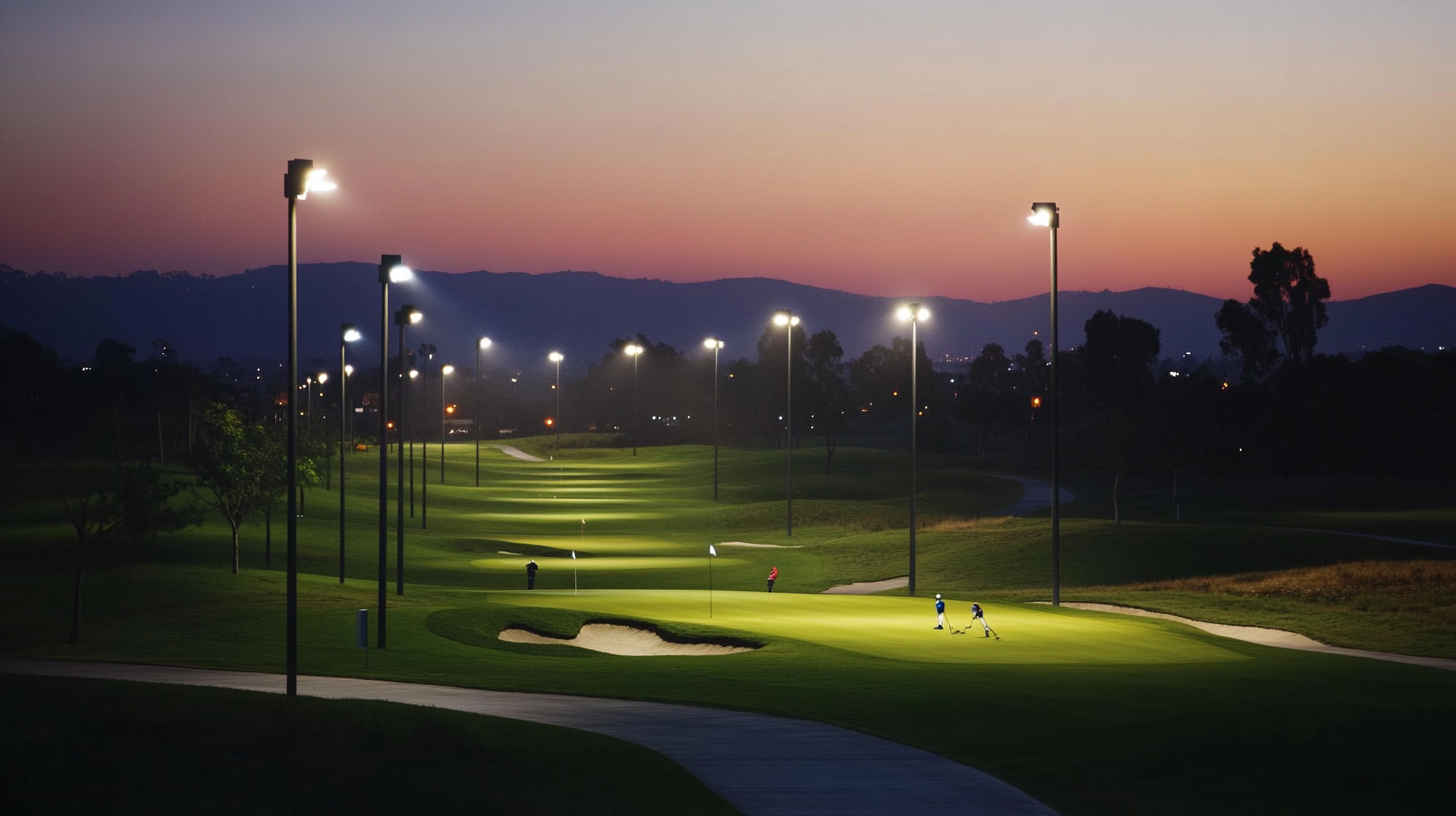
Positioning Light Poles on a Golf Course
Proper placement of light poles is critical for effective lighting. Here’s how to position them:
- High Masts: Use tall poles (20–30 meters) for fairways and greens to cover large areas.
- Tee Boxes and Greens: Position poles behind or to the sides to avoid glare and shadows.
- Fairways: Space poles along edges with inward-angled beams for uniformity.
- Driving Ranges: Place poles at the back and sides with focused beams.
- Pathways and Parking Areas: Use shorter poles (6–10 meters) with diffused lighting.
Strategic pole placement ensures consistent and effective coverage.
How Lighting Impacts Golfers’ Performance
Proper lighting enhances every aspect of the game:
- Improved Visibility: Bright, even lighting makes tracking the ball and assessing terrain easier.
- Reduced Glare: Minimizes distractions and eye strain.
- Accurate Depth Perception: Balanced lighting helps players judge distances.
- Extended Playtime: Allows for evening games and practice.
- Enhanced Focus: Comfortable lighting supports concentration and better gameplay.
By investing in high-quality, well-designed lighting, your course can deliver a superior experience for all players.
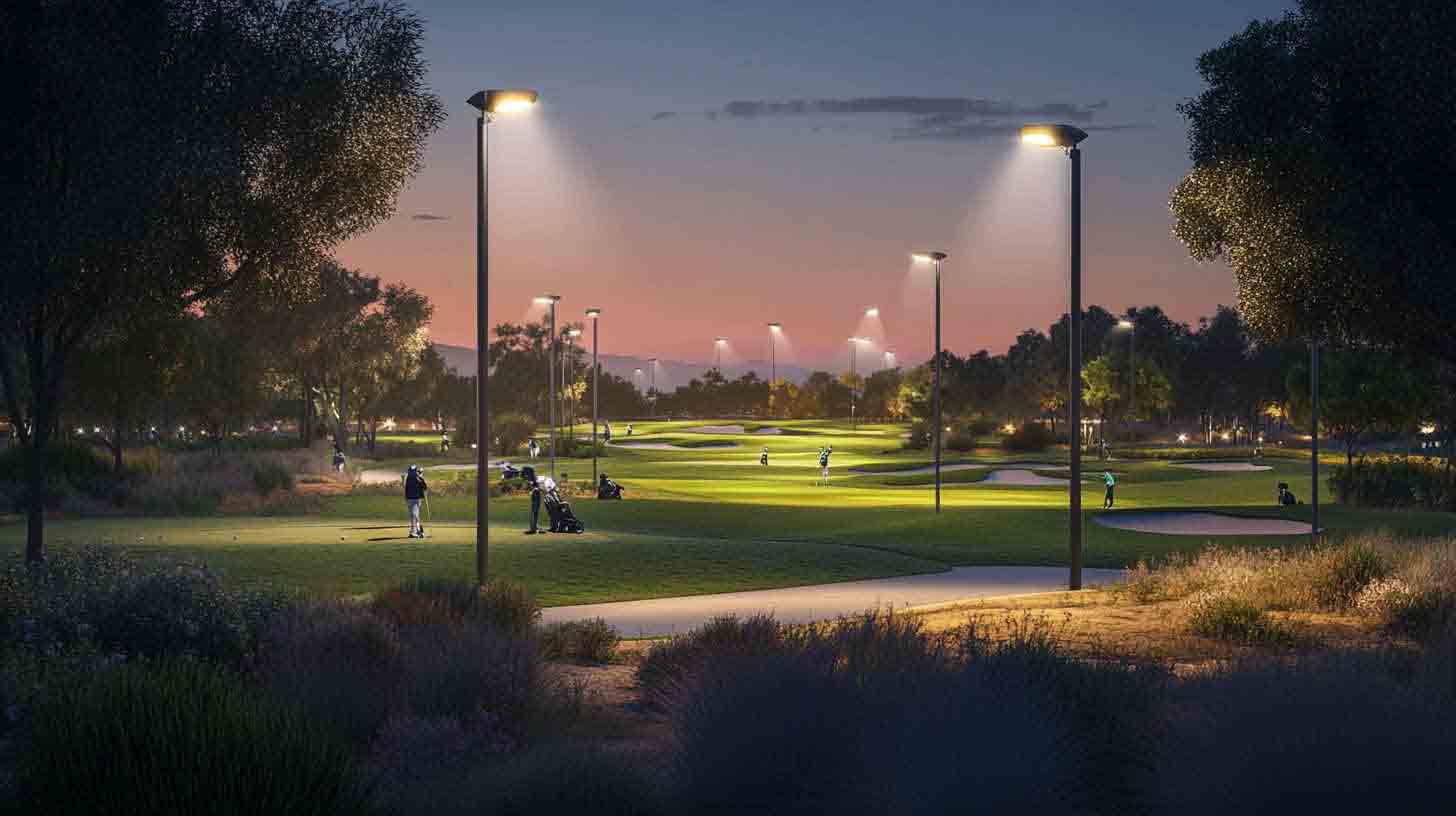
FAQs About Sports Field Lighting
What Are the Requirements for Sports Field Lighting?
- Uniform Lighting: Ensure consistent illumination across the field to avoid dark or overly bright areas.
- Adequate Brightness: Provide enough light for visibility and gameplay, typically measured in lux levels.
- Controlled Light Spill: Prevent light from spilling into non-play areas or causing glare for players and spectators.
What to Do if There is Lightning on a Golf Course?
- Monitor the weather for signs of approaching storms.
- Use a warning system to alert players and staff.
- Designate shelters or safe indoor locations where people can wait until the storm passes.
How Much Would It Cost to Put Lights on a Golf Course?
- Costs range from several thousand to hundreds of thousands of dollars depending on course size and fixtures.
- LEDs have a higher initial cost but save money over time through lower energy consumption and reduced maintenance.
What Is the Price to Install Outdoor Lights?
- Residential Properties: Typically $2,000–$5,000.
- Commercial Properties: Costs are significantly higher based on the scope, fixtures, and labor.
Why Do Golf Courses Charge So Much?
- Operational Costs: Maintenance, staffing, and landscaping.
- Lighting Systems: High-end lighting for evening play adds significant overhead.
Why Is Outdoor Lighting So Expensive?
- Fixtures must endure weather exposure and wear.
- High-quality systems, like LED lighting, offer advanced features such as energy efficiency, long lifespan, and natural daylight simulation.
How Much Do Permanent Outdoor LED Lights Cost?
- Costs range from a few hundred to several thousand dollars per fixture.
- LEDs last longer, consume less energy, and provide excellent light quality.
How Much Does Labor Cost to Install Can Lights?
- Average rates: $50–$100 per hour depending on location and complexity.
- Specialized golf course lighting may require expert technicians, raising labor costs.
What Types of Lighting Fixtures Are Best for Tee Areas?
- Directional Lighting: Floodlights with focused illumination to avoid glare.
- LED Fixtures: Bright, even light resembling daylight and energy-efficient.
What Are the Challenges of Lighting Hilly Fairways?
- Even Illumination: Avoid shadows caused by uneven terrain through careful placement.
- Wide Beam Fixtures: Use adjustable beams to spread light over slopes.
- LED Systems: Modern LEDs provide optimal coverage and adjustability.
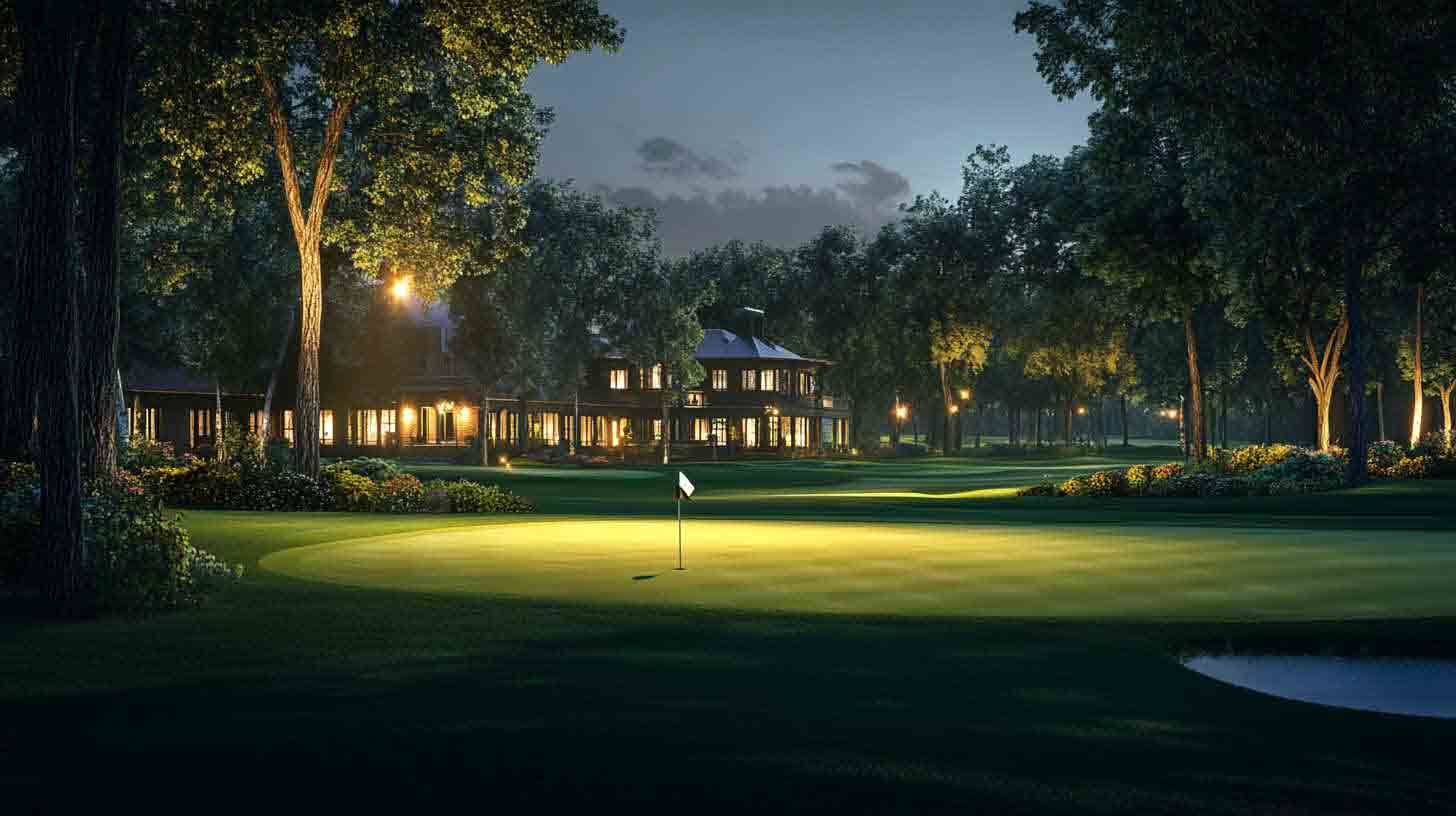
Conclusion
Good golf course lighting is key to safety, playability, and aesthetics. By understanding the requirements and challenges, you can design a system that meets your goals. Upgrading to LED lights or installing new fixtures may seem costly initially, but it pays off with improved performance, happier players, and long-term savings on maintenance and energy.
If you have questions or need expert advice, don’t hesitate to reach out to us. Our team is here to help you create the perfect lighting solution for your golf course.
Request A Free Quote Now!
Send us a message if you have any questions or request a quote. We will get back to you ASAP!



